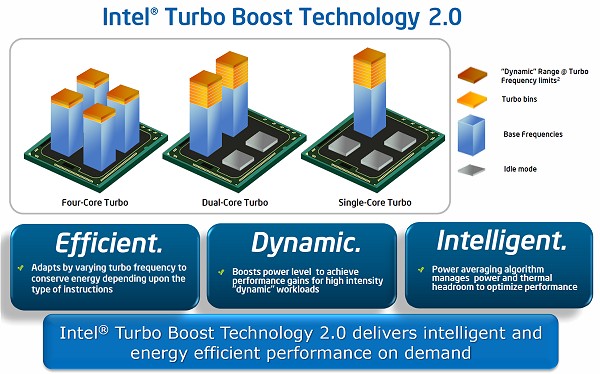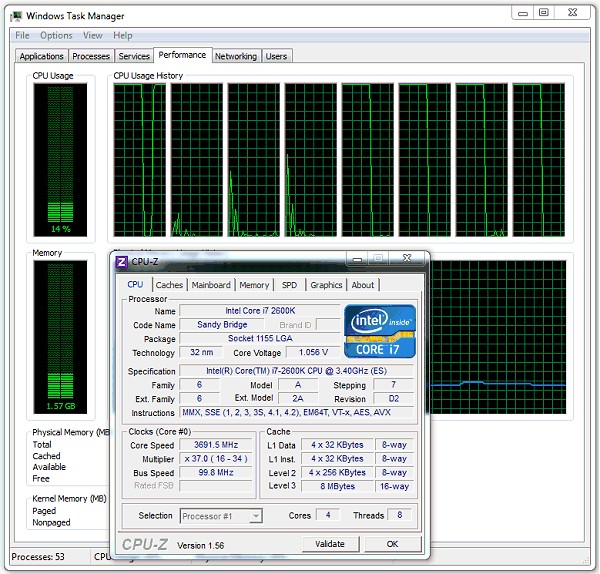Turbo Boost Technology 2.0
Intel's Turbo Boost Technology allows the processor core to opportunistically and automatically increase its rated operating frequency if it detects it's running below power, temperature, and current limits. The Turbo Boost feature is designed to increase performance of both multi-threaded and single-threaded workloads. Maximum frequency is dependent on the model and number of active cores.
No special software support is necessary for Turbo Boost to work and the feature can be enabled/disabled from the BIOS or the Operating System. Compared to previous generation products, Intel Turbo Boost Technology will increase the ratio of application power to TDP.

Turbo Boost was first introduced on the Nehalem architecture (Core i7 920, Core i7 940 and Core i7 965 EE), however this implementation only increased the clock frequency by two turbo bins when using a single core. Meanwhile two and three core loads were only boosted by a single turbo bin.
Intel then improved Turbo Boost on the Lynnfield processors, giving it significantly more influence over performance. The Core i5 750 for example could go as high as three turbo bins when using just one or two cores, boosting the clock frequency from 2.66GHz to a healthy 3.20GHz.

This second generation of Turbo Boost Technology also incorporates the graphics processor into the equation. Just as it works on the processing cores, the graphics core frequency is adjusted according to the workload demand. Turbo Boost 2.0 can optimize both processor and graphics processor performance by managing power for the overall package.
For the graphics processor, this allows an increase in the render core frequency and increased graphics performance for intensive workloads. In addition, during processor intensive workloads when the graphics power is low, the processor core can increase its frequency higher within the package power limit.